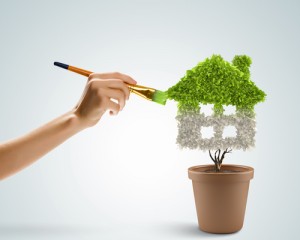 Green building trends are no longer abstract concepts or simply a guiding philosophy. They’re now as substantial as new building materials and as timely as the latest technology. As new construction escalates world-wide, the requirements for increased efficiency and a smaller footprint are more critical than ever. Maintaining the status quo would mean a doubling of energy demand from new structures and CO2 emissions that could more than triple by the midpoint of the 21st century. Here are some of the green building trends that now occupy positions of increasing priority in the industry:
Green building trends are no longer abstract concepts or simply a guiding philosophy. They’re now as substantial as new building materials and as timely as the latest technology. As new construction escalates world-wide, the requirements for increased efficiency and a smaller footprint are more critical than ever. Maintaining the status quo would mean a doubling of energy demand from new structures and CO2 emissions that could more than triple by the midpoint of the 21st century. Here are some of the green building trends that now occupy positions of increasing priority in the industry:
- Look to the long-term. Short-term goals targeted in 20-year plans are now increasingly supplanted by efficiency and carbon reduction plans that reach out as far as 2080. To keep global temperature rises below 2 degrees centigrade, today’s best estimates calculate that CO2 contribution levels should peak no later than 2020 in order to reach zero by 2080.
- Energy efficiency is a mortgage matter. The Federal Housing Administration (FHA) now stipulates certain efficiency requirements for homes where prospective buyers are seeking an FHA-insured mortgage. Tenants will also increasingly see energy efficiency values calculated into the monthly lease of rental housing.
- Walk don’t drive. Urban zones that are not auto-dependent, better known as Walk UPs, are proliferating around the country. Cities like Washington, DC, Boston, Atlanta and Detroit are now experiencing a growing market for residential and commercial rental properties in walkable communities that are compact and efficiency-based.
- Re-thinking suburban space. Large suburban office and industrial parks currently experience vacancy rates as high as 25 percent in some areas. As planners conclude that simple zoning changes are insufficient for revitalization, creative options and fresh ideas for sustainable utilization are now more compelling than ever.
- Health has market value. Increasingly, building design and construction and consumer concern about health matters like the notorious “sick building syndrome” are synergistic. Buyers respond positively to the green message and place a premium value on healthier, more high-performance structures.
Construction Monitor supplies building permit data that empowers sales strategies with information about trends in specific geographic locales.
Image via Shutterstock.com
